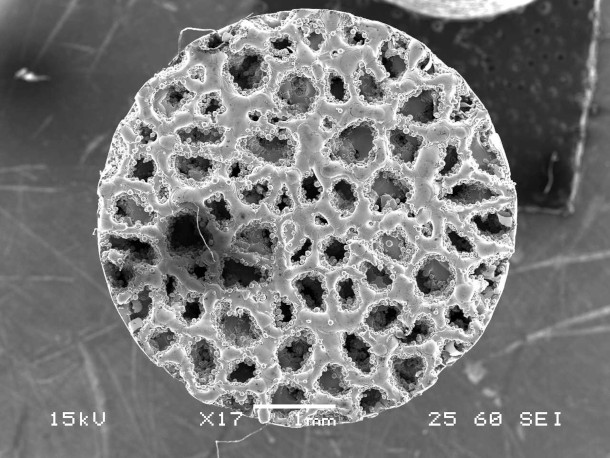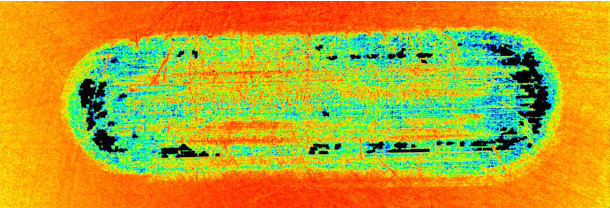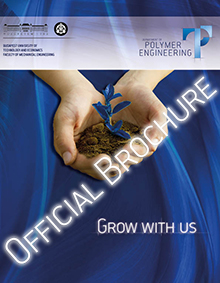Development of implant materials and surfaces with improved load bearing capacity and wear resistance
Dr. Gábor Szebényi
Dr. Gábor Szebényi
Dr. Norbert Krisztián Kovács
Kitti Keszei
István Nemes-Károly
Ágnes Ureczki
Project summary
The aim of the project is to explore the application possibilities of novel technologies, polymers, and polymer composite materials for use in implants with which the listed goals can be achieved. The main key issues and objectives are: Our research is based on two main parts. The first pillar is to improve the lubrication condition of metal–polymer sliding pairs. A comprehensive study of the effects that can be achieved by modifying the polymer material of the artificial joint by crosslinking by irradiation, surface modification by grafting, and by the creation of surface nano- and microstructures. We aim to investigate the effect of titanium-side modifications by creating volumetric structures. We also aim to map the obtained tribological and mechanical characteristics and explore the interactions between them. The second pillar is to develop a new implant manufacturing technology for the processing of medical-grade polymers to create customizable, economically manufacturable implants from polymers and polymer composites. We aim to explore the potential of FDM 3D printing, determine the effects of manufacturing technology parameters (filling structure, orientation, porosity) on tribological properties. We also aim to create direct, in situ surface microstructures to improve the wear properties of 3D printed structures, mapping their effect on the tribological behavior and compare the results with the reference UHMWPE samples. The results of the project will facilitate the creation of longer-lasting implants that withstand higher loads, customizable implants, and even additional patents that could be useful for the industry.
Project results


Project-related publications
- Szederkényi B., Kovács N. K., Czigány T.: A comprehensive review of fiber-reinforced topology optimization for advanced polymer composites produced by automated manufacturing. Advanced Industrial and Engineering Polymer Research, 8, 113-131 (2025) 10.1016/j.aiepr.2024.05.002 IF=9.9 D1
- Szederkényi B., Kovács N.K., Czigány T.: Improving energy absorption in cellular 3D-Printed fiber–reinforced structures with radially reinforced composite shells. Composites Part B: Engineering, 301, 112513/1-112513/11 (2025) 10.1016/j.compositesb.2025.112513 IF=12.7 D1
- Szederkényi B., Rácz I., Kovács N.K., Czigány T.: Finite element modelling of continuous fiber–reinforced composites produced by automated manufacturing. IOP Conference Series: Materials Science and Engineering, 1313, 012002/1-012002/8 (2024) 10.1088/1757-899X/1313/1/012002
- Csvila P., Czigány T.: Multifunctional energy storage polymer composites: The role of nanoparticles in the performance of structural supercapacitors. Express Polymer Letters, 18, 1023-1038 (2024) 10.3144/expresspolymlett.2024.78 IF=2.7 Q2
- Gökler D. J., Karácsony A. F., Faragó D., Szebényi G., Kiss R. M., Pap K.: The effect of sterilization and storage on the viscoelastic properties of human tendon allografts - Continued: Storage for 0 to 4 months. Journal of Biomechanics, 162, 111904/1-111904/10 (2024) 10.1016/j.jbiomech.2023.111904 IF=2.4 Q3
- Szederkényi B., Czigány T., Kovács N. K.: Investigation of continuous fiber–reinforced triply periodic minimal surfaces (TPMS) for high-performance energy absorption applications. in 'ECCM21 – 21st European Conference on Composite Materials Nantes, Franciaország. 2024.06.02-2024.06.05.,1651-1658 (2024)
- Tóth Cs., Lukács N. L., Kovács N. K.: The role of the fiber–matrix interface in the tensile properties of short fiber–reinforced 3D-printed polylactic acid composites. Polymer Composites, 45, 13589-13602 (2024) https://doi.org/10.1002/pc.28720 IF=4.8 Q1
- Nemes-Károly I., Szebényi G.: Development of sintered all-UHMWPE composites for joint implant sockets. in 'ECCM21 - 21st European Conference on Composite Materials Nantes, Franciaország. 2024.07.02-2024.07.05.,1119-1125 (2024)
- Nemes-Károly I., Szebényi G.: Improving optical damage analysis of knee implants from an engineering perspective. Periodica Polytechnica-Mechanical Engineering, 67, 151-160 (2023) 10.3311/PPme.21734 IF=1.3 Q3
- Nemes-Károly I., Szebényi G.: Reliable methods for classification, characterization, and design of cellular structures for patient-specific implants. Materials, 16, 4146/1-4146/16 (2023) 10.3390/ma16114146 IF=3.1 Q1
- Temesi T., Czigány T.: The effect of surface treatment on the shear properties of aluminium-polypropylene joints manufactured by laser beam. Polymer Testing, 117, 107882/1-107882/9 (2023) 10.1016/j.polymertesting.2022.107882 IF=5 D1
- Kiss B., Párizs R. D., Tóth Cs., Török D., Kovács N. K.: Anyagextrúzió alapú additív gyártástechnológiával készült termékek anizotróp viselkedésének elemzése. Polimerek, 5, 155-160 (2023)
- Kara Y., Kovács N. K., Nagy-György P., Boros R., Molnár K.: A novel method and printhead for 3D printing combined nano-/microfiber solid structures. Additive Manufacturing, 61, 103315/1-103315/13 (2023) 10.1016/j.addma.2022.103315 IF=10.3 D1
- Szederkényi B., Turcsán T., Kovács N. K., Czigány T.: Additív gyártástechnológiával készített, folytonos szállal erősített kompozitok szimulációs elemzése. Gép, 73, 82-87 (2022)
- Vas L. M., Tamas P., Bognár E., Nagy P., Kesmarszky R., Pap K., Szebényi G.: Nonlinear fiber-bundle-cells-based phenomenological modeling of human tissue samples. Biomechaniacs and Modeling in Mechanobiology, 21, 1803-1823 (2022) 10.1007/s10237-022-01621-1
- Tóth Cs., Kovács N. K.: Comparison of the accuracy of analytical models for basalt fiber–reinforced poly(lactic acid) composites prepared by injection molding and fused filament fabrication. International Journal of Advanced Manufacturing Technology, 121, 3999–4010 (2022) 10.1007/s00170-022-09572-8 IF=3.4 Q2






